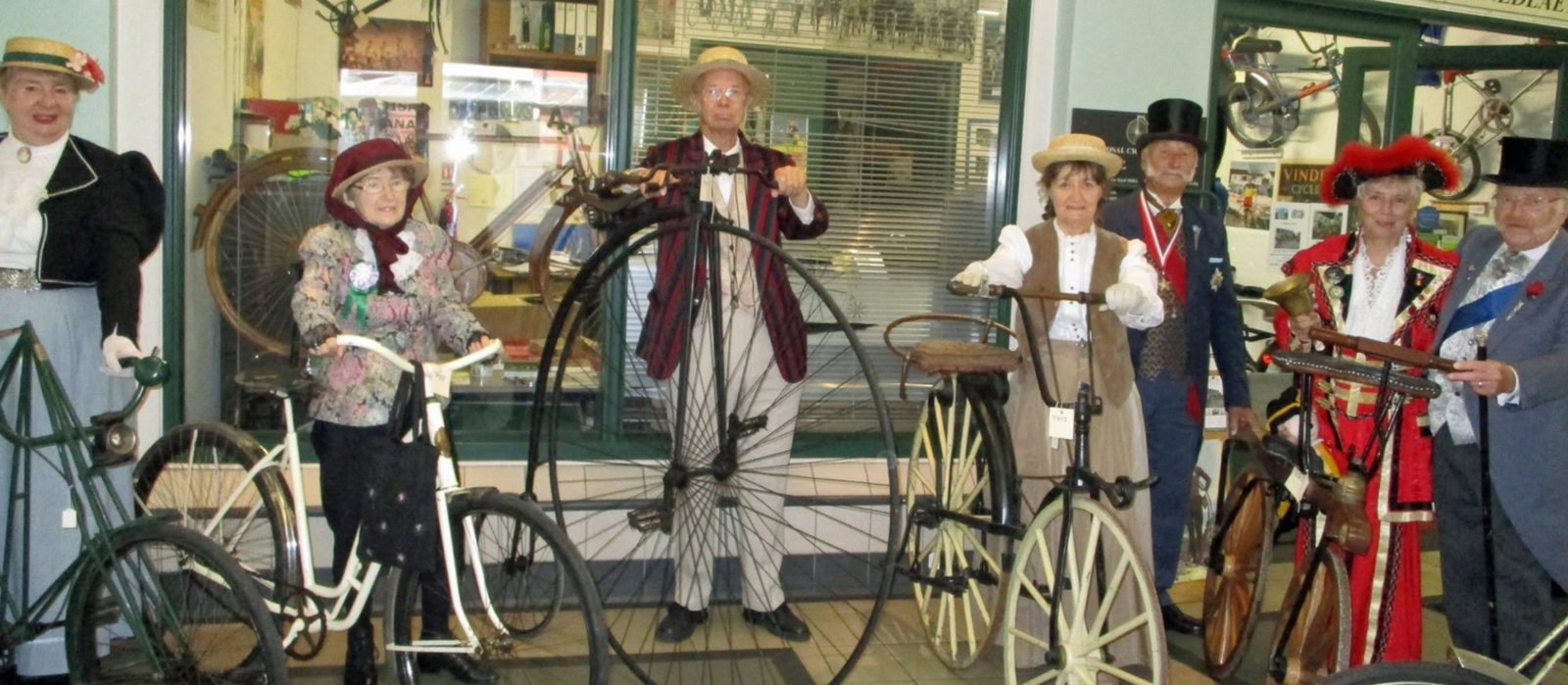The National Cycle Museum will be open from 10am to 4pm from Monday to Saturday this week for Llandrindod Wells Victorian Festival, which runs from August 21 to 27.
The museum loans some Victorian era bicycles for a cycle parade and is inviting visitors to view a Bicycle Cavalcade on Friday, August 25 to see exhibits close up and hear about their history.
A new exhibition at the museum focuses on the Army Cycling Corps from the First World War. The corps played specific roles at the start of the war, authorised by Lord Kitchener in 1914 and initially comprising volunteers who were proficient in cycling.
“The volunteers were encouraged to join to play a specialised part in the war, carrying messages and patrolling areas which were in danger of attack, such as the coastline around Britain,” explained Caroline Schofield, a museum volunteer.
“Using cycles was easier and more humane than riding on horseback but unfortunately, as the war progressed, these men were sent to the trenches. They were armed just like the infantry and, when manpower was running short, they became involved in trench warfare.
“A small number of units were used throughout the war, especially as the telephone system was in danger of being sabotaged by the Germans, but still many thousands of men lost their lives.
“The exhibition acts as a memorial and a tribute to the usefulness of the bicycle in bygone days.”
She added that Llandrindod Wells played an important role during the First World War, as The Commodore Hotel was turned into a military medics training hospital and other hotels in the town provided nursing and respite care for injured soldiers.
Freda Davies, museum curator, said the festival was traditionally the busiest week of the year for the museum and its trustees.
“The museum has bene very busy with visitors in the last few weeks, especially if it rains, as visitors are then looking for indoor attractions where they can shelter from the weather,” she added.
Many amazing bicycles spanning 200 years of cycling and a wealth of cycling memorabilia are on display in the museum.
Located in the Automobile Palace, Temple Street, the museum is home to more than 250 cycles, representing the historical development of cycling from the early 1800s to the present day.
The first bicycle made by Johnson of London is displayed alongside an 1818 Hobby Horse, Victorian solid-tyred machines and the latest carbon fibre racing models.
It costs £20,000 a year to keep open the doors to the museum, which relies on the generosity of supporters and visitors to finance its work.









Leave a Reply
View Comments